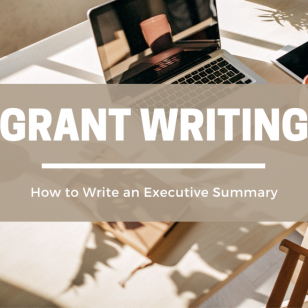By Kelsey Boudin
President and Founder, Southern Tier Communications Strategies, LLC
Grants are highly competitive, yet your nonprofit organization’s success depends in part — or in whole — on routinely securing funding. A grant may support a small initiative, perhaps less than $1,000 to provide books to elementary school children. A planning grant of $20,000 or less may provide funding to contract with a consultant to strategize a regional traffic safety campaign. A capital campaign may require a series of grants and other charitable contributions to construct a new facility carrying a multimillion-dollar price tag.
Whether the support you seek is big or small, your grant writing requires powerful storytelling to urge support for a powerful impact. Words are your tools. They’re your paintbrush and strokes behind a beautiful, colorful narrative about who you are, what you do and what you plan to do.
Compelling Stories Bring Grant Success
Great storytelling invites funders to partner in your nonprofit success. It brings them on board, allows them to see both the big picture and the small, to envision your mission and what drives you to accomplish it.
Grants are more than just dollars and cents. They’re a gift tied to the stipulation of human impact. Potential storylines abound.
Express Your Nonprofit Mission
Your grant writing mission is to strongly express your nonprofit mission. It’s more than a mission statement, a well-crafted snapshot of goals and values. It’s more than simply what you do. It’s what drives everything you and your staff do from community outreach to building playgrounds to filing quarterly reports.
Tell that story. Each initiative completed is a person or community positively impacted and a step toward accomplishing your mission. More importantly, the meaning behind that impact is the true value proposition funders will recognize and support.
This segues nicely to our next point.
Give Your Story a Face
While grant funders want to quantify human impact, the stories behind those numbers are ultimately most impactful. Each person has a face and a name. Each location sits with its unique storyline in some distinct location on a map. Your grant narrative is an ideal place to provide a platform for those faces, names and places to speak their truth. Include testimonials — excerpts or in their entirety — if possible.
Here’s your chance to get creative. That single mother whose children now have access to free after-school tutoring? Paint a picture of how hers and her children’s lives have improved. Is she no longer missing work, rushing to collect the kids from school and drop them at an expensive daycare? Have her kids’ grades improved? Did a graduate of your nonprofit tech-mentorship program land a job with Google? Do you commit to training hundreds of unemployed machinists on 21st-century skills to bolster the regional workforce?
Those are powerful, colorful stories. Detailed well, they amplify your mission and goals better than facts and figures ever could.
Express Need Powerfully (But Honestly)
Most nonprofit initiatives exist to serve underserved communities that would, without help, scarcely afford nor access vital services. The competitive grant process, however, draws proposals stressing community need, most just as dire as your own. So what makes yours stand out above the rest?
Honest storytelling.
You’ll likely offer a grim picture for your program recipients without your services. That likely will be true and important to include. But rather than indicating only that a certain percentage of your catchment may suffer, use their stories to affirm need. Remember those positive stories above? Good stories quickly become negative without your means to provide their good fortune.
But a word of caution: don’t overhype or, worse, lie in your needs statement. Sniffed-out falsehoods land grant proposals in the trash.
If you’re having difficulty crafting your nonprofit story for grant funding, don’t hesitate to hire a strong consultant to hone your message.








4 Donor Engagement Steps for Your Nonprofit’s Year-End Fundraising Campaign - Southern Tier Communications Strategies
February 27, 2023 @ 9:30 pm
[…] may be. Despite popular belief, local and regional media interviews may also serve as avenues to tell the story of your nonprofit mission and invite support. If there’s a way your research indicates any […]